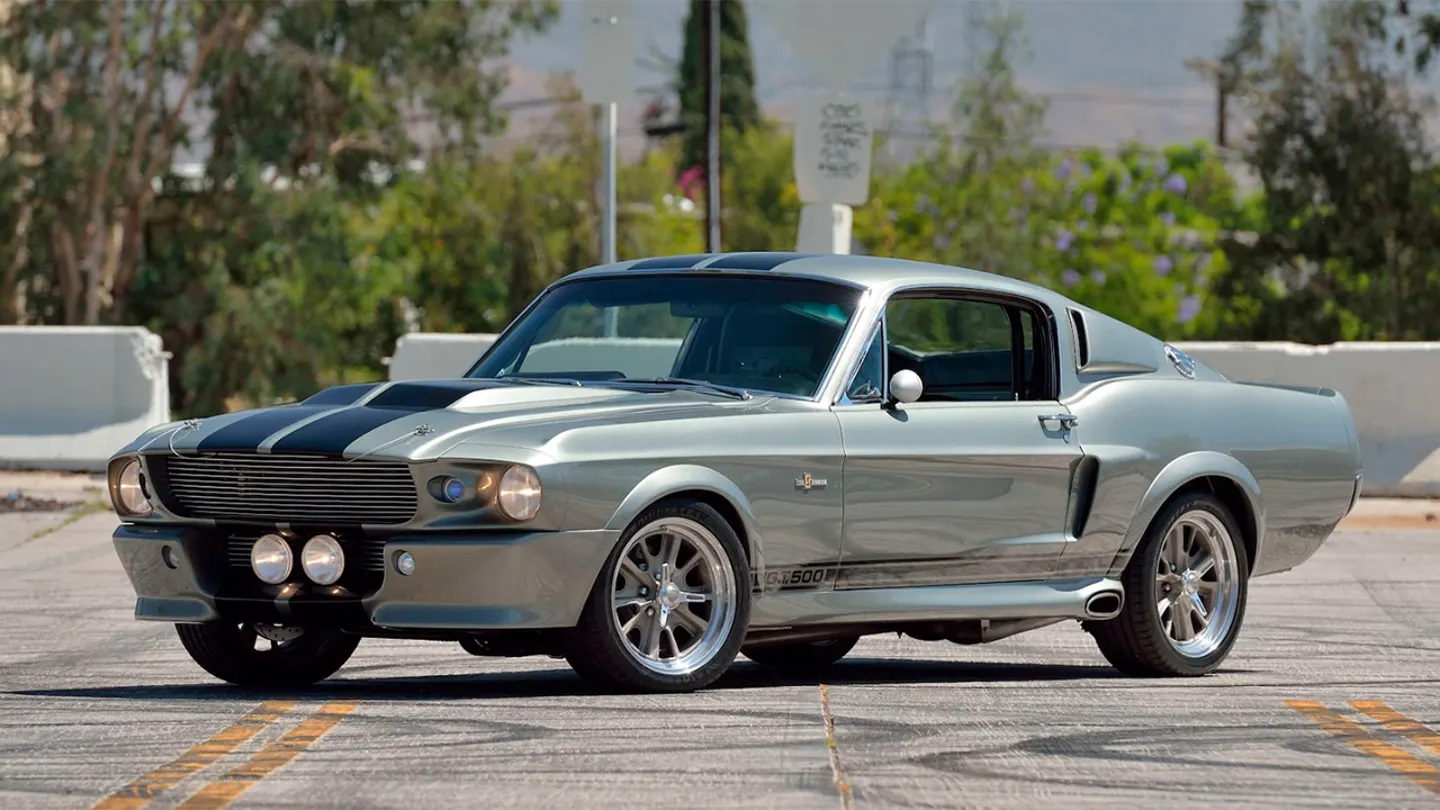Eleanor and the American Muscle Evolution

Few cars have captured the public imagination like the Ford Mustang GT500, especially the iconic “Eleanor”, immortalized in Gone in 60 Seconds. With her sleek silver body, black racing stripes, and explosive charisma, Eleanor cemented the GT500’s place in pop culture and performance lore. Today, a new contender takes her place in the spotlight – the Mustang GTD. As Ford’s most advanced Mustang ever, it’s a radical reinterpretation of the performance car playbook. While it might not bear the Shelby badge, the GTD undoubtedly carries Eleanor’s spirit into a new era of racing-inspired technology. Continuing our Under the Hood Mustang special (check out our review of the 2025 Ford Mustang GT here), we’ll explore the cultural legacy of Eleanor, what made the Shelby GT500 so special, and how the GTD lives up to her iconic status today.
The Legend of Eleanor: Muscle, Myth, and the Movies

‘Eleanor’ as it appeared in Gone in 60 Seconds. Provided by Mecum.
The name Eleanor first appeared in the original Gone in 60 Seconds (1974), but it was the 2000 remake, starring Nicolas Cage, that cemented its status as an iconic car in the cultural sphere. Reimagined as a custom 1967 Shelby GT500, Eleanor became one of the millennium’s most coveted cars.
Finished in metallic silver with black racing stripes, the custom Eleanor design featured flared wheel arches, a side-exit exhaust, and modern detailing that set her apart from standard muscle cars. Built by Chip Foose and production designer Steve Stanford, the film’s Eleanor was both beautiful and bold, a movie star in her own right. Though inspired by the Shelby GT500, Eleanor was a heavily customized build and not an official production model.
Since then, Eleanor has inspired everything from licensed replica builds to auction block battles. Her image is found on posters, collector models, and YouTube tributes. So what made the Shelby GT500 have such a wide-ranging impact?
What Made the Shelby GT500 So Special
Outside Hollywood, the Shelby GT500 nameplate has long been the quintessential symbol of Mustang excellence. Born in the late 1960s through Ford’s collaboration with Carroll Shelby, the original GT500 offered bigger engines, better handling, and a direct link to Ford’s racing ambitions.
In modern form, the most recent GT500 (2020–2022) was an absolute weapon. With a 5.2-liter supercharged V8, it produced 760 horsepower – the most ever in a production Mustang at the time. It wasn’t just incredibly fast in a straight line either, as it came equipped with:
- A dual-clutch 7-speed transmission
- Magnetorheological dampers for responsive handling
- Aerodynamic upgrades like a rear wing and front splitter
The GT500 was at its core a muscle car but one that had grown into something far more capable, while still delivering the roaring engine desired by hot-rod enthusiasts.
Enter the GTD: The Mustang Goes Motorsport

The Mustang GTD’s modern and stylish interior. Provided by Ford Motor.
In 2023, Ford announced something completely unexpected: the Mustang GTD, built for 2025. Rather than continuing the Shelby GT500 lineage, Ford shifted direction straight into motorsport.
Named after the IMSA GTD racing class, the Mustang GTD draws design and engineering inspiration directly from Ford’s GT3 race car. Not content with simply creating a faster Mustang, Ford has designed the GTD to fit firmly into the 21st century.
Key features of the GTD include:
- A supercharged 5.2-liter V8 targeting ~800 horsepower
- A rear-mounted transaxle for near 50/50 weight distribution
- Carbon fiber body panels for reduced weight and improved rigidity
- Pushrod rear suspension and adjustable ride height
- Active aerodynamics, including a hydraulically controlled rear wing
Ford estimates the GTD will lap the Nürburgring in under seven minutes, putting it in supercar territory. It’s designed to compete with the best from Porsche, Ferrari, and McLaren.
GT500 vs. GTD: Legacy and Evolution
| Feature | Shelby GT500 (2020–2022) | Mustang GTD (2025) |
| Engine | 5.2L Supercharged V8, 760 hp | 5.2L Supercharged V8, ~800 hp |
| Transmission | 7-speed dual-clutch | 8-speed dual-clutch transaxle (rear-mounted) |
| Layout | Front-engine, RWD | Front-engine, rear transaxle, RWD |
| Construction | Steel/aluminum, with aero kit | Carbon fiber body, race-derived aero |
| Focus | Street & track performance | Race-first, street-legal performance |
| Estimated Price | ~$75,000 | ~$300,000 |
If the GT500 was the pinnacle of accessible power, brutally fast, loud, and distinctly American, the GTD raises the bar, delivering motorsport-grade technology in a limited-run package intended for a new kind of performance buyer.
While the GT500 captured hearts with muscle and myth, the GTD targets lap times and elite engineering. Both iconic, but in very distinct ways.
Why the GTD Is Eleanor’s Modern Spirit
For car enthusiasts, Eleanor looked like nothing else on the market. The GTD shares that DNA.
- Both turn heads on design alone
- Both stretch the Mustang formula beyond its previous limits
- Both symbolize the Mustang at its most ambitious and exclusive
The GTD may not carry the “Eleanor” name, but it inherits her role: a halo car that captures the imagination of enthusiasts and pushes the bar on the Mustang formula.
The Mustang’s Legacy Lives On
From Eleanor’s Hollywood heroics to the Shelby GT500’s tire-shredding strength, the Mustang has always stood for freedom, fun, and performance. The 2025 Mustang GTD may offer some fresh design features, with carbon fiber and active aero instead of chrome and stripes, but the message remains intact.
Whether you grew up dreaming about Eleanor or not, one thing is for certain: not only does the Mustang legacy live on, but it’s still evolving.
Sources (accessed June 2025):
- Ford Performance
- Car and Driver
- Road & Track
- MotorTrend
- Hagerty
- Top Gear
- Shelby American
- Mecum
Banner image provided by Ford Motor (June 2025)
- Cars That’ll Haunt Your Garage This Halloween! - October 22, 2025
- How to Calculate the Salvage Value of a Car - October 20, 2025
- Car Gap Insurance vs Loan/Lease Payoff Explained - October 16, 2025